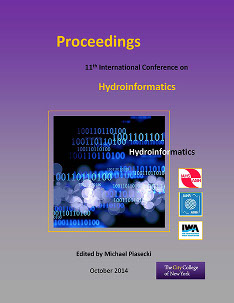Document Type
Presentation
Publication Date
8-1-2014
Abstract
Numerical models are used as effective tools for simulating complex processes in aquatic systems, such as hydrodynamic and water quality processes. The accuracy of the model is reliant on the multiple model parameters and variables which need to be calibrated and regularly updated to reproduce changing conditions accurately. Different sources of observations such as remote sensing data or in-situ monitoring technologies can improve the model accuracy by providing benefits of individual monitoring technology within the model updating process. Remote sensing technology can provide the spatially dense surface temperature of water body, while in-situ technology is able to prepare more frequent time interval data along the depth. Hence, a framework is required to find the relationships between the remote sensing and in-situ measurements, especially if they are used together. Moreover, a data assimilation approach is needed to incorporate spatially continuous remote sensing temperature observations and spatially discrete in-situ observations to change initial conditions of the numerical model. Although several studies have used remote sensing and in-situ observations to assimilate water temperature, it is unclear of whether updating temperature based on remote sensing observations would improve the model’s prediction of temperature with respect to in-situ observation. This study explores a direct observer data assimilation method to overcome the challenge of using data from heterogeneous sources for improving the model performance. The main goal of this study is to adjust the water column temperature using surface temperature and present an ensemble Kalman filter data assimilation framework that combines three-dimensional finite difference numerical model with multiple sources of observations to simulate water column temperature in Eagle Creek Reservoir (ECR) in central Indiana.



Comments
Session R47, Remote Sensing and LiDAR Data: Water Quality, Vegetation, and Bathymetry